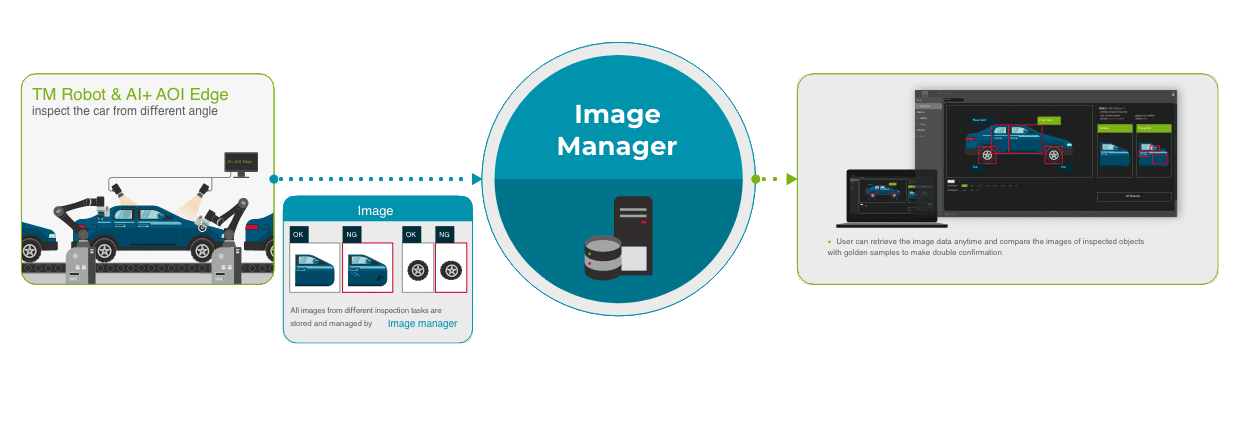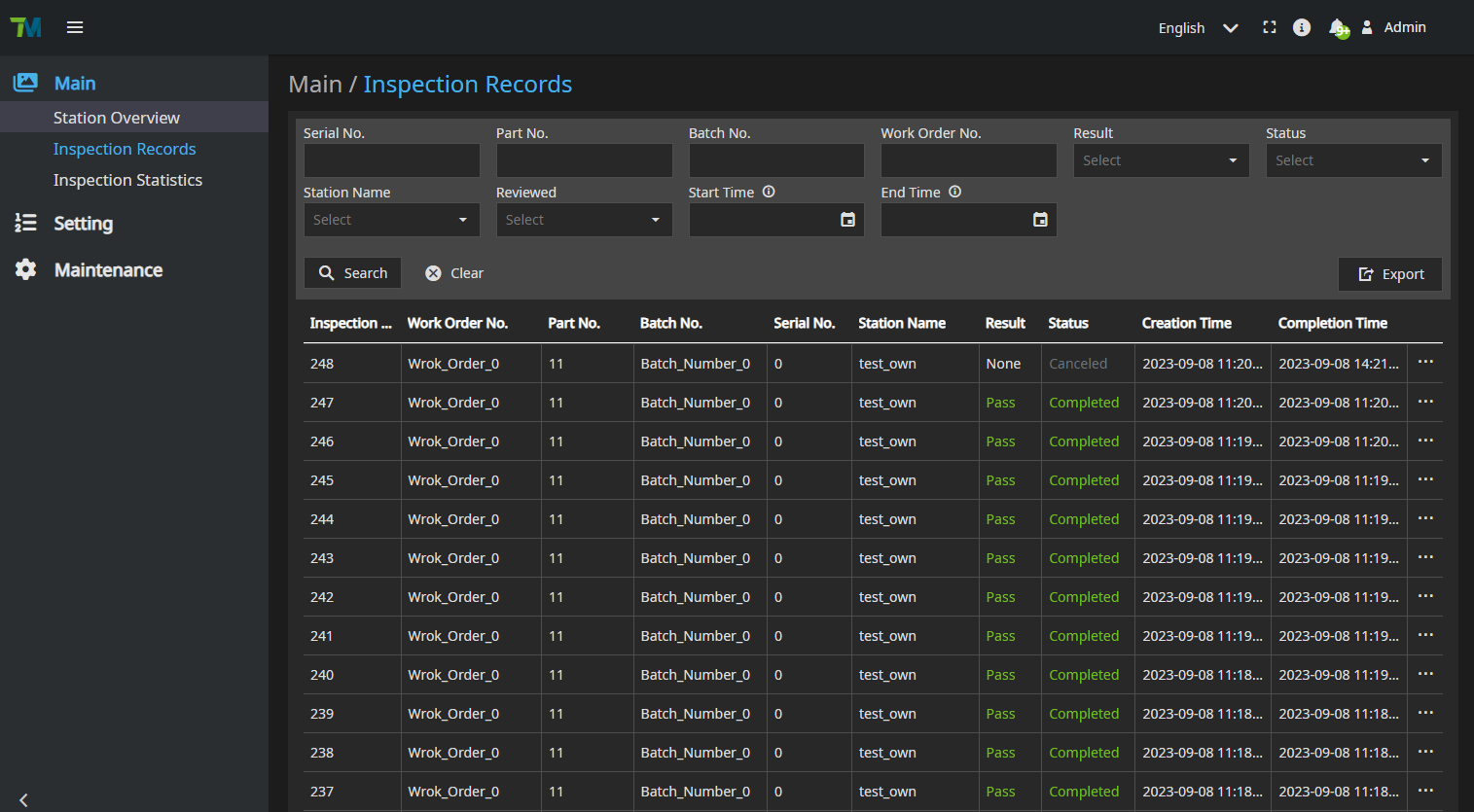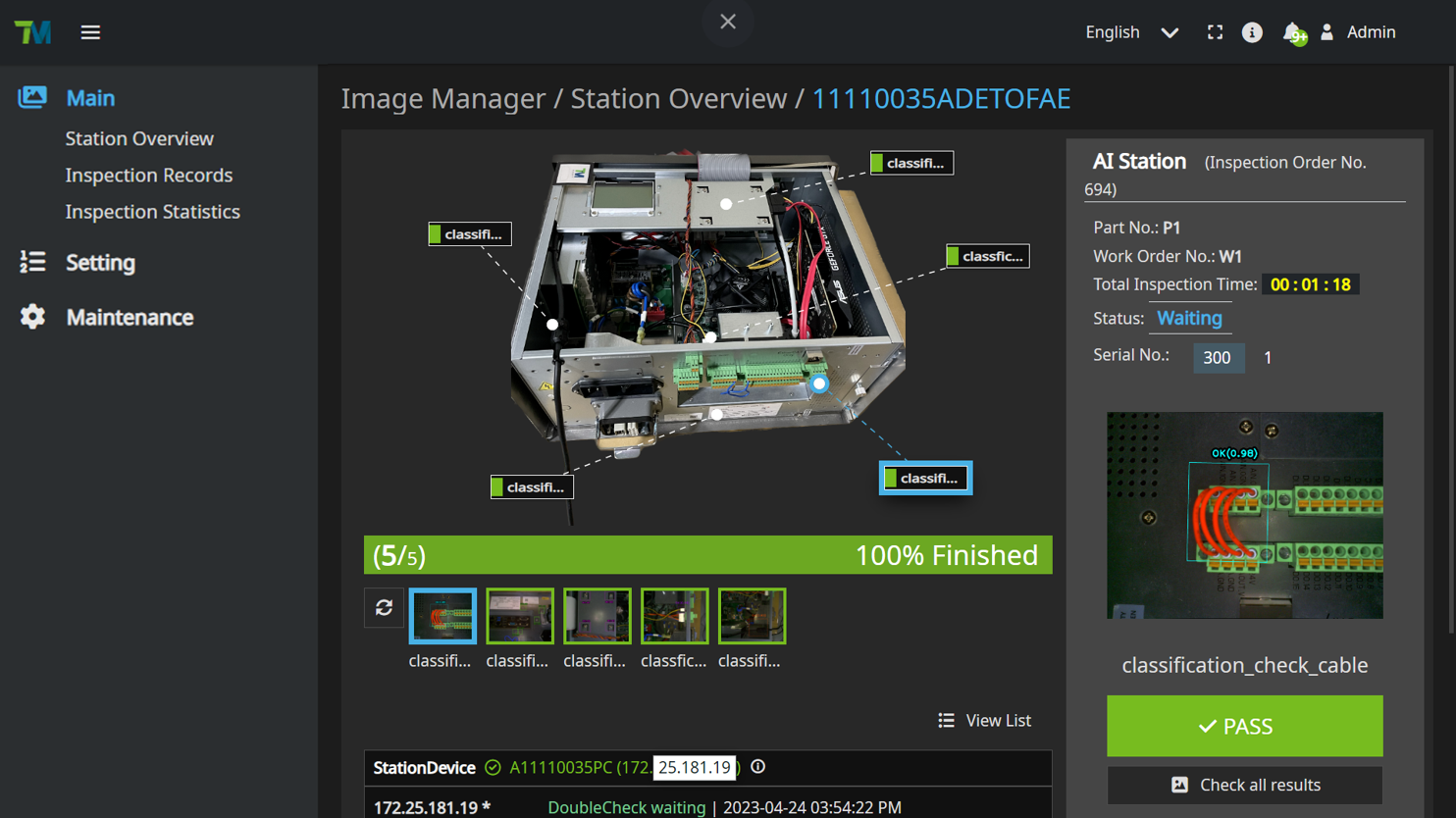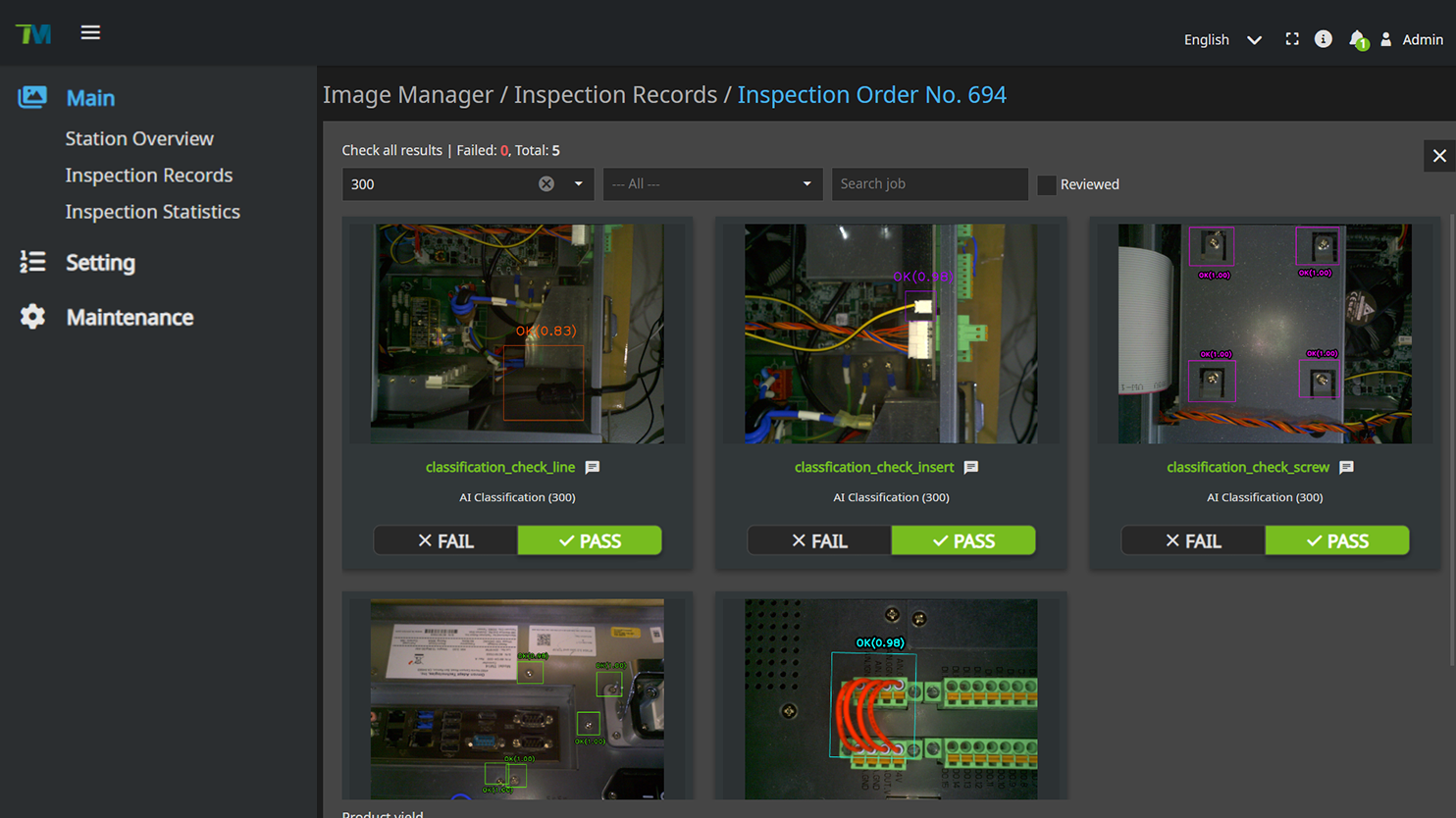Ensuring Excellence: Traceable Quality for Your Product
Real-time monitoring, trace inspection images and results
TM Image Manager
Product Features
Rapid Deployment: It can be deployed within 1 week after the hardware is installed
AOI Result/Image Retrieval: Historical data can be queried with different filters

Manual Review Function: Show ground-truth and current image for manual double confirmation
Data Management: Images and AOI results can be stored in a database and retrieved easily.
How TM Image Manager Works?

Image Storage and Retrieval

- Inspection images can be saved
- Images can be retrieved and exported through different filter conditions
Real-time Monitoring

- Monitor the inspection progress and status of each workstation
- Can customize the layout of the inspection area
Online Inspection

- AOI results can be manually reviewed and corrected online
- Can simultaneously see both the image of the standard product and the product images that were detected with defects
Specification
Software requirements
TMflow Software version
Ver. 2.18 or above
Hardware requirements
Operating system
Only Ubuntu 22.04 *(1) *(2)
CPU
Intel i7 Gen 7 or above
RAM
32GB or above
Storage SSD
SSD 2TB or above, up to 8GB
Communication interface
Ethernet
Language support
EN, TW, CH, JP, KR, Thai
Remark
Support up to 10 TM AI Cobots and AI+ AOI Edges for continuous simultaneous transmission of images. *(3)
*(1) Image Manager is not allowed to be installed on the virtual environment of personal computer, like VirtualBox.
*(2) Please verify if your computer hardware supports Ubuntu 22.04 LTS 64. For any issues, please contact your hardware supplier.
*(3) When more than 10 connections are established, all simultaneously transmitting images, the users need to evaluate the potential issues caused by system overload.
